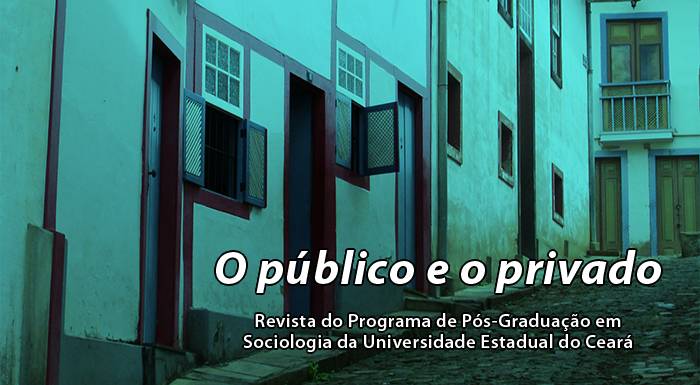The incomfortable story of the dams in Sinaloa, Mexico. Regional asymmetries and necessary inexperiences
asimetrías regionales e inexperiencias necesarias
DOI:
https://doi.org/10.52521/20.8175Keywords:
Relacalización, Agroindustria, Política Hidroagrícola, Grandes Presas, DesplazadosAbstract
The construction of dams in the state of Sinaloa, in the northwest of the country, is one of the most complicated in Mexico, since it is due to a hydro-agricultural policy promoted since the first half of the previous century, and the result of which places the state as the main producer of grains and vegetables.
The agricultural vocation of the state, driven by the construction of large dams during the last eighty years, means that the agri-food activity cannot be sustained without a permanent and safe supply of water, and that is why the construction of dams is prioritized. Sinaloa has twelve large dams, one more under construction, two executive projects ready to be applied and generate two more reservoirs, as well as several dozen complementary hydraulic works, such as smaller dams, and irrigation canals.
Of the twelve dams installed, nine required the displacement of populations. The imposition of the projects and the conditions of the relocation and of the habitability in the new towns were to the detriment of the affected families, who number more than four thousand.
The present work is part of the results of an extensive and prolonged ethnographic investigation, where some of the arbitrariness of each displacement or the vicissitudes of adaptation to the new peoples are illustrated, in an attempt to rescue the historical memory of the 198 flooded towns, and whose memory may be lost because there are no official records of how many localities were flooded, how many families were displaced, and even how many new towns were created for those families.
References
ARONSSON, Inga-lill. Impresiones de un proyecto de reasentamiento. Alteridades, n° 4, p. 51-59, 1992.
ASOCIACIÓN INTERAMERICANA PARA LA DEFENSA DEL AMBIENTE (AIDA). Grandes represas en América, ¿peor el remedio que la enfermedad? Principales consecuencias ambientales y en los derechos humanos y posibles alternativas. Colombia: Editorial Gente Nueva, 2009.
BARABÁS, Alicia Mabel. Normatividades jurídicas en torno a las relocalizaciones de población indígena. Pueblos indígenas ante el derecho. México: CIESAS/Centro Francés de Estudios Mexicanos y Centroamericanos, 1995.
BARABÁS, Alicia Mabel; BARTOLOMÉ, Miguel Alberto. Antropología y relocalizaciones. Alteridades, n° 4, p. 5-15, 1992.
COMISIÓN NACIONAL DEL AGUA (CONAGUA). Estadísticas del agua en México 2018. México: SEMARNAT, 2018. Disponible en: <http://sina.conagua.gob.mx/publicaciones/EAM_2018.pdf> Acceso el: 25 feb. 2022.
COMISIÓN NACIONAL DEL AGUA (CONAGUA). Atlas del agua en México 2015. México: SEMARNAT, 2015. Disponible en:
<http://agua.org.mx/cono/multimedia/mapas/1131-mapas/38767-atlas-del-agua-en-mexico-2015> Acceso el: 25 feb. 2022.
FONDO DE INFRAESTRUCTURA HIDRÁULICA DE SINALOA (FIHSIN). Manifestación de Impacto Ambiental. México: Documento presentado ante la SEMARNAT, 2005.
GARCÍA CORTÉS, Adrián. Pueblos Unidos, la tierra prometida. México: Ayuntamiento de Culiacán/Instituto La Crónica de Culiacán, 2007.
GONZÁLEZ VALDÉS, Ronaldo. Sinaloa: una sociedad demediada. México: H. Ayuntamiento de Culiacán/Casa Juan Pablos, 2007.
INTERNATIONAL COMMISSION ON LARGE DAMS (ICOLD). Carta Circular 1443. Disponible en: <https://www.icold-cigb.org/GB/members_section/circular_letters.asp?IDG=1#main> Acceso el: 25 feb. 2022.
INSTITUTO NACIONAL DE ESTADÍSTICA Y GEOGRAFÍA (INEGI). México en cifras. México: Base de datos. 2020. Disponible en: <https://www.inegi.org.mx/default.html; http://cuentame.inegi.org.mx/monografias/informacion/sin/poblacion/> Acceso el: 25 feb. 2022.
INSTITUTO NACIONAL DE ESTADÍSTICA Y GEOGRAFÍA (INEGI). Anuario estadístico y geográfico de Sinaloa 2017. México: INEGI, Gobierno del Estado de Sinaloa, 2017. Disponible en: <https://www.datatur.sectur.gob.mx/ITxEF_Docs/SIN_ANUARIO_PDF.pdf> Acceso el: 25 feb. 2022.
MANCERA GONZÁLEZ, Omar. Estrategias de supervivencia y empoderamiento de las comunidades desplazadas por presas en Sinaloa (México), en Egea, Carmen y Nieto, José (coords.). Colectivos en desventaja social y habitacional. La geografía de las desigualdades. España: Universidad de Granada. Pp. 171-185, 2019.
MANCERA GONZÁLEZ, Omar. Etnografía de la relocalización. Procesos socio-gubernamentales derivados de la presa Picachos, Sinaloa. México: Tesis (Maestría en Antropología Social) Universidad Iberoamericana, 2010.
MARCUS, George E. Etnografía Multisituada. Reacciones y potencialidades de un Ethos del método antropológico durante las primeras décadas de 2000. Etnografías Contemporáneas 4(7), p. 177-195, 2018. Disponible en: <https://revistasacademicas.unsam.edu.ar/index.php/etnocontemp/article/view/475> Acceso el: 28 oct. 2022.
OLVERA MOLINA, Mónica. Conflictos por el uso del agua en las políticas de escala de la configuración territorial de grandes presas hidroeléctricas en México: El río Santiago durante el neoliberalismo. México. Tesis (Maestría en Geografía) Universidad Nacional Autónoma de México (UNAM), 2012.
PALERM, Ángel. Aspectos socioeconómicos del proyecto La Angostura. México: Informe elaborado para la CFE/Manuscrito original, 1969.
PÉREZ QUIJADA, Juan. Reacomodos treinta años después. Alteridades, n° 4, p. 61-66, 1992.
RAMÍREZ LÓPEZ, Jesús Antonio. Análisis socioambiental. La construcción de la presa Picachos: una visión histórico-socioambiental. México: Dirección General de Educación en Ciencia y Tecnología del Mar/Centro de Estudios Tecnológicos del Mar, 2008.
SCCUDER, Thayer; COLSON, Elizabeth. From welfare to development: A conceptual framework for the analysis of dislocated peoples. Involuntary migration and resettlement. USA: Hansen and Oliver Smith, 1982.
SECRETARÍA DE AGRICULTURA, GANADERÍA, DESARROLLO RURAL, PESCA Y ALIMENTACIÓN (SAGARPA); SERVICIO DE INFORMACIÓN AGROALIMENTARIA Y PESQUERA (SIAP). Panorama Agroalimentario 2021. México: SIAP, 2021. Disponible en: < https://nube.siap.gob.mx/gobmx_publicaciones_siap/pag/2021/Panorama-Agroalimentario-2021> Acceso el: 28 oct. 2022.
SECRETARÍA DE AGRICULTURA, GANADERÍA Y PESCA DEL GOBIERNO DEL ESTADO DE SINALOA. Embalses del estado de Sinaloa, México. México: Gobierno del Estado de Sinaloa, 2010. Disponible en: <http://laipsinaloa.gob.mx/images/stories/CEMARCOSIN/EMBALSES%20FINAL(1).pdf> Acceso el: 25 feb. 2022.
VELASCO TORO, José; CRUZ SÁNCHEZ, Martín; MARTÍNEZ MARANTO, Alfredo. Los hombres que dispersó el agua. Políticas de relocalización involuntaria. Anuario IX. México: Universidad Veracruzana, p. 259-276, 1994.
Downloads
Published
How to Cite
Issue
Section
License
Copyright (c) 2023 Omar Mancera González

This work is licensed under a Creative Commons Attribution 4.0 International License.











